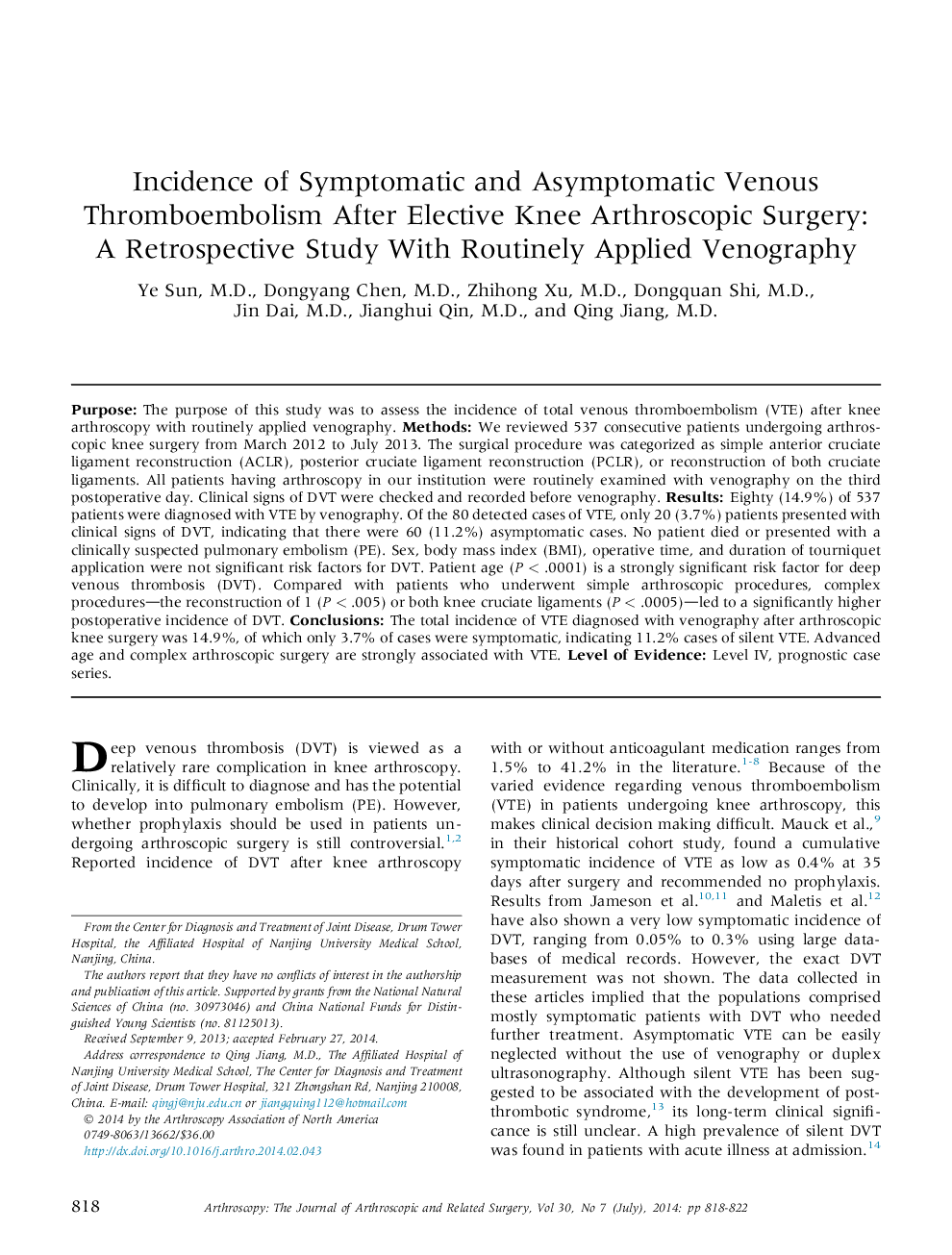| Article ID | Journal | Published Year | Pages | File Type |
|---|---|---|---|---|
| 4043206 | Arthroscopy: The Journal of Arthroscopic & Related Surgery | 2014 | 5 Pages |
PurposeThe purpose of this study was to assess the incidence of total venous thromboembolism (VTE) after knee arthroscopy with routinely applied venography.MethodsWe reviewed 537 consecutive patients undergoing arthroscopic knee surgery from March 2012 to July 2013. The surgical procedure was categorized as simple anterior cruciate ligament reconstruction (ACLR), posterior cruciate ligament reconstruction (PCLR), or reconstruction of both cruciate ligaments. All patients having arthroscopy in our institution were routinely examined with venography on the third postoperative day. Clinical signs of DVT were checked and recorded before venography.ResultsEighty (14.9%) of 537 patients were diagnosed with VTE by venography. Of the 80 detected cases of VTE, only 20 (3.7%) patients presented with clinical signs of DVT, indicating that there were 60 (11.2%) asymptomatic cases. No patient died or presented with a clinically suspected pulmonary embolism (PE). Sex, body mass index (BMI), operative time, and duration of tourniquet application were not significant risk factors for DVT. Patient age (P < .0001) is a strongly significant risk factor for deep venous thrombosis (DVT). Compared with patients who underwent simple arthroscopic procedures, complex procedures—the reconstruction of 1 (P < .005) or both knee cruciate ligaments (P < .0005)—led to a significantly higher postoperative incidence of DVT.ConclusionsThe total incidence of VTE diagnosed with venography after arthroscopic knee surgery was 14.9%, of which only 3.7% of cases were symptomatic, indicating 11.2% cases of silent VTE. Advanced age and complex arthroscopic surgery are strongly associated with VTE.Level of EvidenceLevel IV, prognostic case series.
